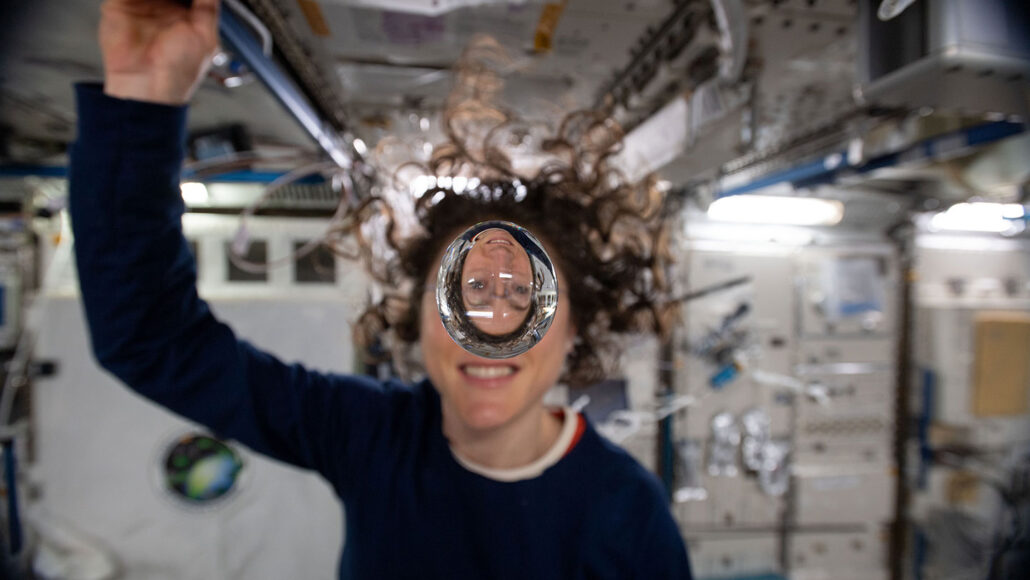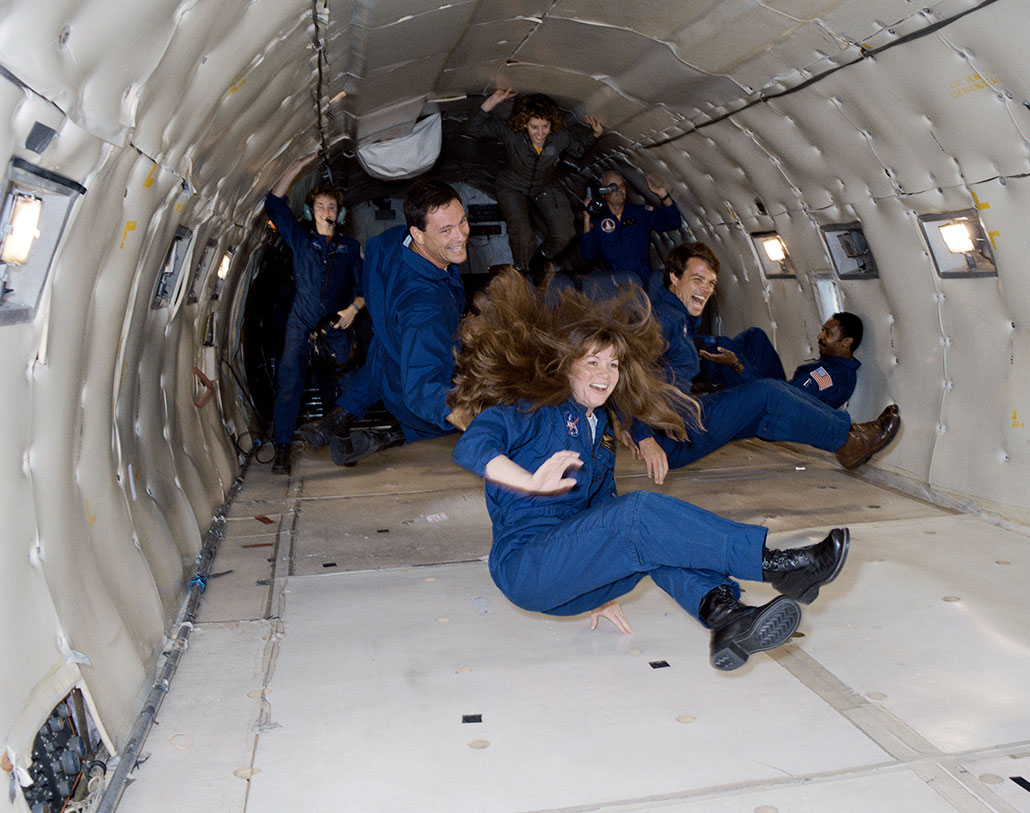Explainer: Gravity and microgravity
Gravity will exert a pull between any two objects. When this pull is very weak, it’s called microgravity

Astronauts aboard the International Space Station learn to appreciate the effects of weightlessness. Here, NASA flight engineer Christina Koch plays with a floating glob of water.
NASA
By Trisha Muro and Bethany Brookshire
Gravity is a fundamental force that is measured as the attraction between any two objects with mass. It pulls more strongly between objects with larger masses. It also weakens the farther apart objects are.
You stay on the surface of the Earth because our planet’s mass is attracting your body’s mass, holding you to the surface. But sometimes gravity is so small that it can be hard to measure — or feel. “Micro” means something small. So, microgravity refers to very small gravity. It exists wherever gravity’s pull is much smaller than we’re used to feeling on Earth’s surface.
Earth’s gravitational pull exists even out in space. It does get weaker for astronauts in orbit, but only by a little bit. Astronauts orbit about 400 to 480 kilometers (250 to 300 miles) above Earth’s surface. At that distance, a 45-kilogram object, which weighs 100 pounds on the ground, would weigh about 90 pounds.
So why do astronauts experience weightlessness in space? It’s due to how orbits work.
When something — such as the International Space Station, or ISS — is in orbit around Earth, gravity is constantly pulling it back towards the ground. But it’s also moving so fast around the Earth that its motion matches Earth’s curvature. It’s falling around the Earth. This constant falling motion creates a sense of weightlessness.
Lots of people wonder if NASA has a “zero gravity room” for astronauts to train in. But no. It’s impossible to just “turn off” gravity. The only ways to simulate weightlessness or microgravity is to balance gravity’s pull with another force, or to fall! This effect can be created on a plane. Scientists can study microgravity by flying a special type of plane very high, then steering it into a carefully planned nose-dive. As the aircraft speeds steeply downward, anyone inside will feel weightless — but only for about one minute.

Some research on the space station has focused on microgravity’s effects on the human body. For instance, astronauts’ bodies undergo many rapid changes due to weightlessness. Their bones weaken. So do their muscles. Those changes resemble aging and diseases on Earth — but in fast forward. The Tissue Chips in Space program tries to mimic those fast changes in human cells grown on chips. Those chips could then be used to quickly study the effects of diseases and drugs to help people on Earth.
Lab-grown cells in space also could provide a more accurate testbed for drugs and diseases. “We don’t fully understand why, but in microgravity, cell-to-cell communication works differently than it does in a cell-culture flask on Earth,” notes Liz Warren. She works in Houston, Texas, at the ISS National Laboratory. Cells in microgravity, therefore, behave more like they do in the body, she explains.
Astronauts’ bodies weaken in space because they literally don’t have to pull their own weight. On Earth, our bones and muscles develop the strength to keep our bodies upright against the force of Earth’s gravity. It’s like strength training you’re not even aware of. Not surprisingly, then, even short trips into space can weaken astronauts’ muscles and bones. Astronauts on the ISS must do lots of exercise to stay healthy.
As we plan journeys to other planets, people will need to know what microgravity’s other impacts may be. For instance, weightlessness can affect astronauts’ eyesight. And plants grow differently in microgravity. That’s important for understanding how crops will be affected during long-term space travel.
Beyond impacts on human health, some effects of microgravity are just plain cool. Crystals grow more perfectly in microgravity. Flames behave in unusual ways. Water will form a spherical bubble instead of flowing as it does on Earth. Even honeybees and spiders build their nests and webs differently when they experience gravity lower than what they’re used to on Earth.







